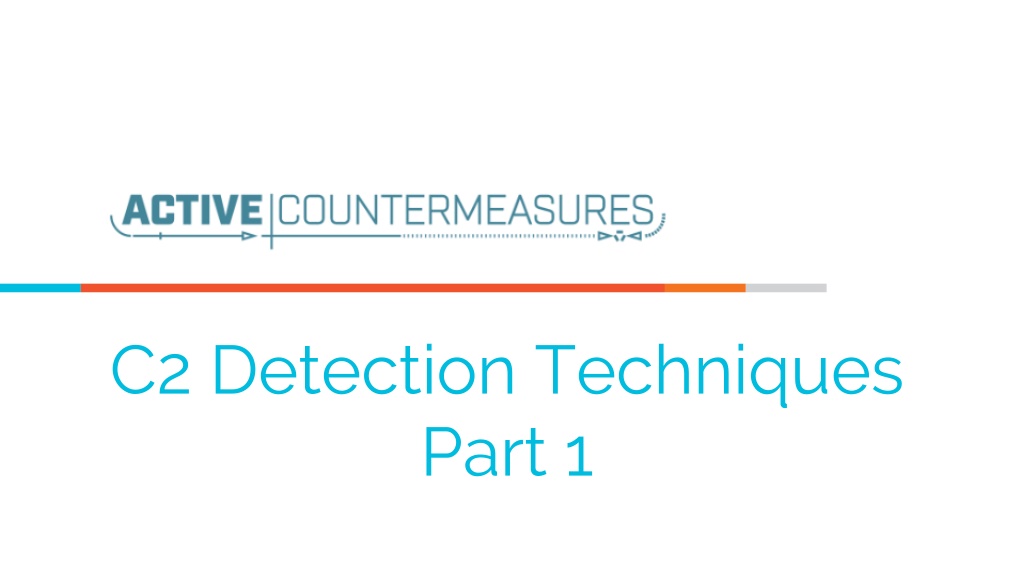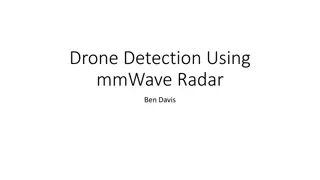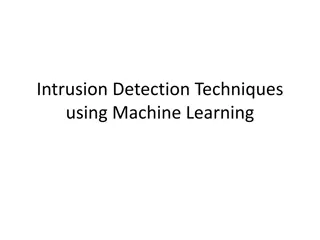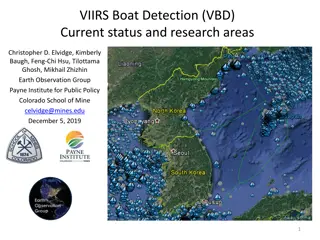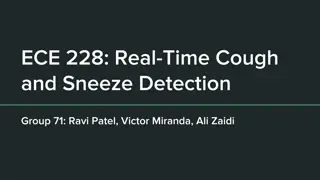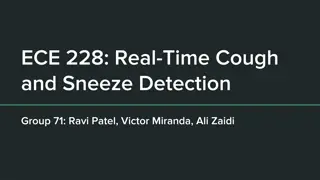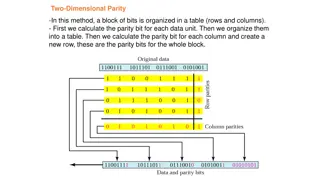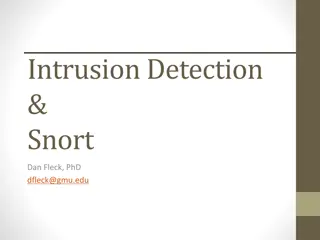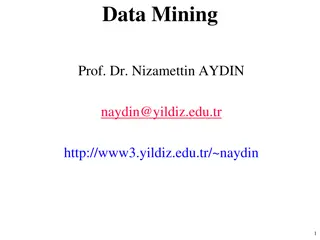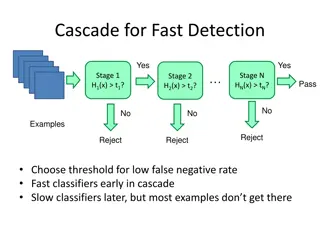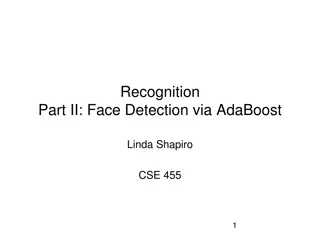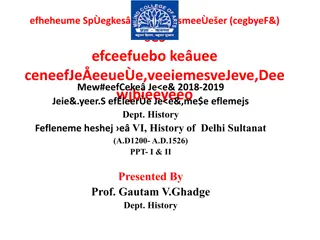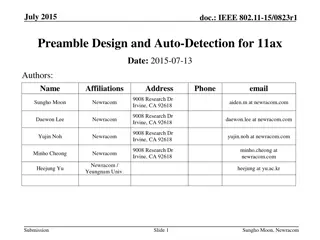C2 Detection Techniques Part 1
In this comprehensive guide, explore C2 detection techniques, the importance of identifying persistent connections, and why starting with persistent connections is crucial. Learn about threats, methodologies, and the difference between bad actors and red teams. Get insights on where to start with packet captures or Bro/Zeek data for analyzing communication pairs to uncover potential C2 activity. Dive deep into the world of C2 detection and understanding long connections.
Download Presentation

Please find below an Image/Link to download the presentation.
The content on the website is provided AS IS for your information and personal use only. It may not be sold, licensed, or shared on other websites without obtaining consent from the author.If you encounter any issues during the download, it is possible that the publisher has removed the file from their server.
You are allowed to download the files provided on this website for personal or commercial use, subject to the condition that they are used lawfully. All files are the property of their respective owners.
The content on the website is provided AS IS for your information and personal use only. It may not be sold, licensed, or shared on other websites without obtaining consent from the author.
E N D
Presentation Transcript
C2 Detection Techniques Part 1
What We Will Cover Goals and objectives Long connections Beacons
C2 Detection - What is the goal? Identify persistent connections Internal to external Are the hosts in constant communication? Does connection appear automated? Can the connection be explained? Valid business need These will be whitelisted These will be screened for potential C2
Why start with persistent conns? C2 can look like normal traffic Attackers are better at being protocol compliant May not be any "signatures" to match But sometimes you get lucky Threat intel feeds can be dated Too easy to change IPs/domains Most successful attackers are targeted Gone the path of anti-virus
Techniques Vs Methodology We are going to deep dive on finding C2 It's important to understand what needs to happen "under the hood" Some of these techniques don't scale Manually breaking out connection pairs But that's OK Will focus on tools in a later module For now, focus on just the techniques
Bad guys Vs. Red Teams Bad guys = C2 is part of a business model Red team = C2 is why they get paid Much harder to detect red team C2 than the real bad guys In the wild, most evil C2 beacons <= 60 seconds Red team on long term contract <= week Focus will be on the bad guys
Where to Start Packet captures or Bro/Zeek data Analyze in large time blocks More data = better fidelity Minimum of 12 hours, 24 is ideal Analyze communications in pairs For every internal IP, each external IP it connected to Ignore internal to internal (high false positive)
Long connections You are looking for: Total time for each connection Which ones have gone on the longest? Cumulative time for all pair connections Total amount of time the pair has been in contact Can be useful to ignore ports or protocols C2 can change channels
Long connection examples 24 Hours SYN FIN SYN FIN SYN FIN SYN FIN SYN FIN SYN FIN SYN FIN
Long connections challenges TCP Time between first SYN and last FYN/ACK UDP Stateless so no flags to work with Identify a timeout for session reset Most firewalls <=30 seconds same "session" Other transports Similar to UDP ICMP can be extra problematic
Wireshark-Statistics-Conversations 86,400 seconds = 24 hours
What about firewalls? Surprisingly hard to get this info "Timing" tends to be TTL, not duration BSD pftop - output connection age in seconds Junos show security flow session extensive node all Duration in seconds
Beacons Same rules - internal to external Can be more challenging than long conns Looking for persistent outbound signal Is there consistency in timing? Is there consistency in session size?
A beacon timing example Flat line = beacon!
Beacon session size example Heartbeat (check in, nothing to do) Activation
Session size analysis with R cut extracts session size, passes through R for analysis Min sessions size Max sessions size Mean very close to min could indicate a heartbeat Standard deviation is small and close in value to mean minus min . Indicator this could be a heartbeat
Beacon jitter The introduction of variance into timing Designed to make signal harder to detect Cobalt Strike: bsleep($1, 60, 50); For all beacon IDs ($1) Sleep 60 seconds Jitter timing +/- 50% This become a challenge statistically Easier to detect in "time buckets"
Try this at home! Let's use a spreadsheet to simulate bsleep bsleep($1, 60, 50); Low = 30 seconds, high = 90 seconds Generate a random time from 30-90 =RANDBETWEEN(30,90) What happens when small samples are checked? What about large samples? Can I get a flat line?
Detecting beacons with jitter Analyze timing in blocks Average connection timing for each hour or two Plot the average over 24 hours This helps normalize out the jitter More dependable than just doing a straight statistical analysis
Potential false positives Long connections BGP Chat programs Dynamic web pages (weather) Beacons NTP Internal DNS forwarder to external DNS resolvers Chat programs Security software Whitelist to remove from future hunts
What next? Investigate all persistent connections Time to perform a deeper analysis on each Look at: Protocol usage Source IP Destination IP Will cover this in the next module
Wrap Up Questions? Content feedback? Please email: courses@activecountermeasures.com
